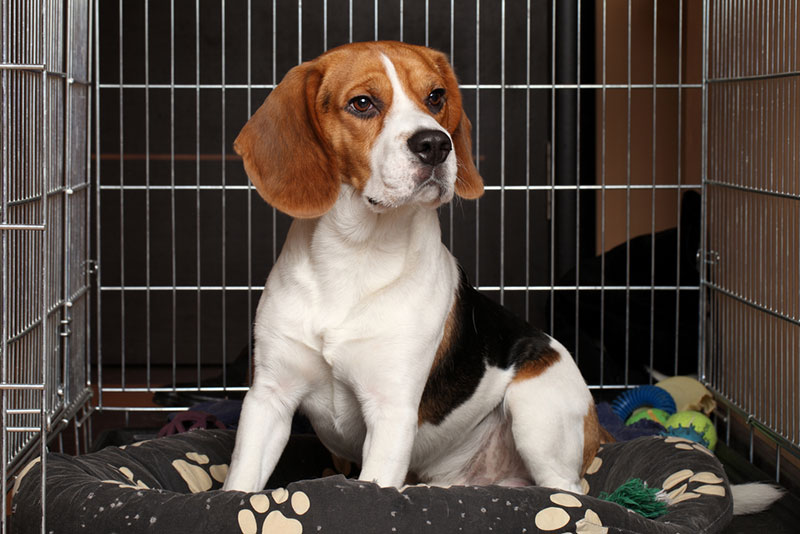For many members of the corporate world, the work from home stage has come and gone with the return to the office imminent. During quarantine, many families decided to add a furry friend to the family to liven up their home and add another source of joy in their lives. Unfortunately, your quarantine puppy might have gotten used to everyone being home and is in for a shock when everyone returns to work. For your puppy’s safety and the safety of your own home, you may have to resort to crate training for when you are away from your home. Our Sicklerville dog training experts have a few tips on how to go about introducing your puppy to a crate and getting used to their time inside the crate.
An introduction period should be had for your puppy and his new hangout spot. You want your puppy to associate the crate with happiness and relaxation rather than fear or anxiety. This association will allow the puppy, in time, to get into the crate when they have to rather than resisting.
A way to do this is by placing their favorite toys or treats in the crate which invites them in to get to know the space better. If they are scared to go in, place them near the outside of the crate and slowly work your way into the crate. Never force your puppy into the crate because this creates the association of fear rather than relaxation.
The crate should be placed in the room where your puppy spends the most time with you and your family. This will help with making sure your puppy is already comfortable with the space surrounding the crate.
Mealtime should be hosted regularly inside the crate. Puppies love to eat and associate it naturally with happiness and fullness. Regularly hosting meals inside the crate will allow that feeling to link to the crate making it an easier transition to spending time in the crate without mounds of food. Only place the food bowl as far as you need to inside the crate and slowly move it back as time progresses.
After feeding time, immediately let your puppy back out. You don’t want your puppy to think it has been tricked into it which could lead to a negative association with eating. Gradually extend the time being in the crate with the door closed.
After the introduction period, hopefully, your puppy is a lot more comfortable with the crate. However, more work should be done to make sure nothing happens when the crate is needed during work hours. A good tip is to teach your puppy to learn how to stay by following the command of your voice. A lot of the time, the puppy will happily go into the crate for a moment then simply walk out of it when you are about to close the crate. If your puppy listens to your commands to stay, you will be able to expand on that by teaching him to go into the cage. Again, start small and don’t pressure your puppy into anything. It is also important to leave your puppy alone. The longer they are in the crate and you are just outside, they can get themselves worked up and frustrated. It is important to leave quickly when making your errand or trip to work.
Halo House Animal Resort hopes this quick overview helps!

